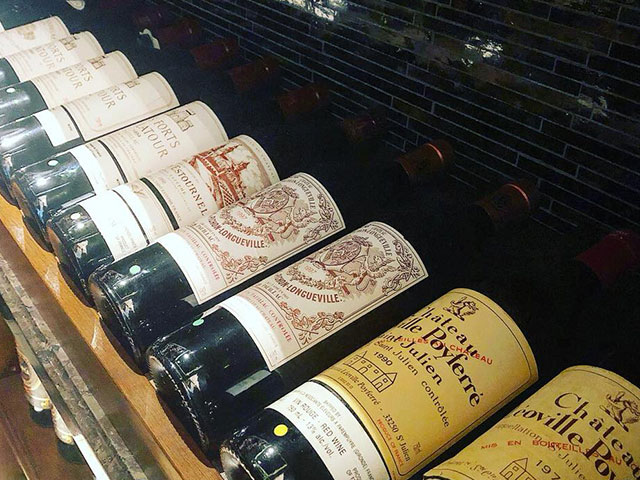How to Store Your Wine Properly

Four simple tips to store your wine collection for the long term.
by Erin
So you’ve been given a couple of great bottles of wine and you’re thinking you’d like to age them for a while. Now what?
How to go about storing wine for the long term is one of the most commonly asked questions we get at our virtual and live events.
My immediate response to that is, do you even like older wines? Wine, as it ages, loses the fresh, upfront fruit over time, and notes of leather, roasted nuts, soy sauce, and dried fruit begin to emerge. Some love that tertiary character, but not everyone. Do you?
Which brings me to my next point. The majority of wines being made these days are not intended for long term aging. They’re here for a good time, not a long time, and are probably best consumed within five to 10 years after release.
Now, if you are still dead-set on getting your cellar on, here’s some pointers that will guide you to wine storage success.
Temperature
Have you ever visited a winery that kept its barrel cellar on the second floor? Didn’t think so.
There’s a very good reason wineries age their wines underground: it’s naturally cool (not cold), dark and humid (more on these points in a second).
Heat can really speed up the life of a wine, and in extreme cases even cook it – leaving the wine’s flavours flat and dull.
Ideally you would want you cellar temperature to be somewhere around 55 degrees Fahrenheit, give or take, to allow bottles to age at the proper slow and steady pace.
Light
The next enemy to wine is light – which is why most wine bottles are dark. The sun’s UV rays can fry a wine, prematurely aging it – just like humans. Do your wine a favour and give it the sunblock it craves: in the dark, away from windows.
Humidity
Underground temperatures of winery cellars have the right natural humidity: somewhere in the ballpark of 70%.
The slight dampness in the air helps corks from drying out. Therefore damaging air can’t get into the bottle nor can wine from seep out. (Although, I’ve come across a few bottles in my time that have suffered this dastardly affliction but were still drinking quite well. Wine seepage is not a sure sign that the wine has gone off.)
However, be warned, full-on humidity is not great, either. It can cause corks and labels to mold (not ideal of you are hoping to resell your prized collection).
Vibration
Smooth and steady, kids. Despite what you have seen at bachelorettes, wine bottles do not like to dance.
Shaking risks disrupting the sediment that may have formed in your red wines, sending it swirling through the bottle. This grit isn’t harmful, but it’s not pleasant, and now you have to give it another few days to settle down. And there is nothing celebratory about waiting for your wine.
Vibrations can also cause a chemical reaction in the wine which makes it age faster.
Wine Storage Options
So if you can’t store your wine decoratively on top of your fridge, where can you store it?
Back in the day, The Wine Sisters offered cellar management (we don’t anymore). We helped organize and consult on many home cellars that were bigger than my entire condo. Going that route is beaucoup dollars, but certainly a show-stopper if you have the budget and the space.
I use a wine fridge for my mid- and long-term cellaring and have found it works perfectly fine for my needs. There are bazillions of versions available from a couple hundred bucks to several thousand. What fits your space, budget and wine collection is up to you.
Finally, if you have a house with an unfinished basement, that’s your ticket to Easy Wine Storage Street. Similar to a winery cellar, your basement is underground, dark, and just the right soupçon of humidity. And if your space is creepy enough, it’s likely left alone from visitors so pesky vibrations will not be a problem.
I recommend you grab some shelving from your favourite home building store, and pout it in an unused corner away from windows and heat – and enjoy the fruits of your labour for many years to come.
